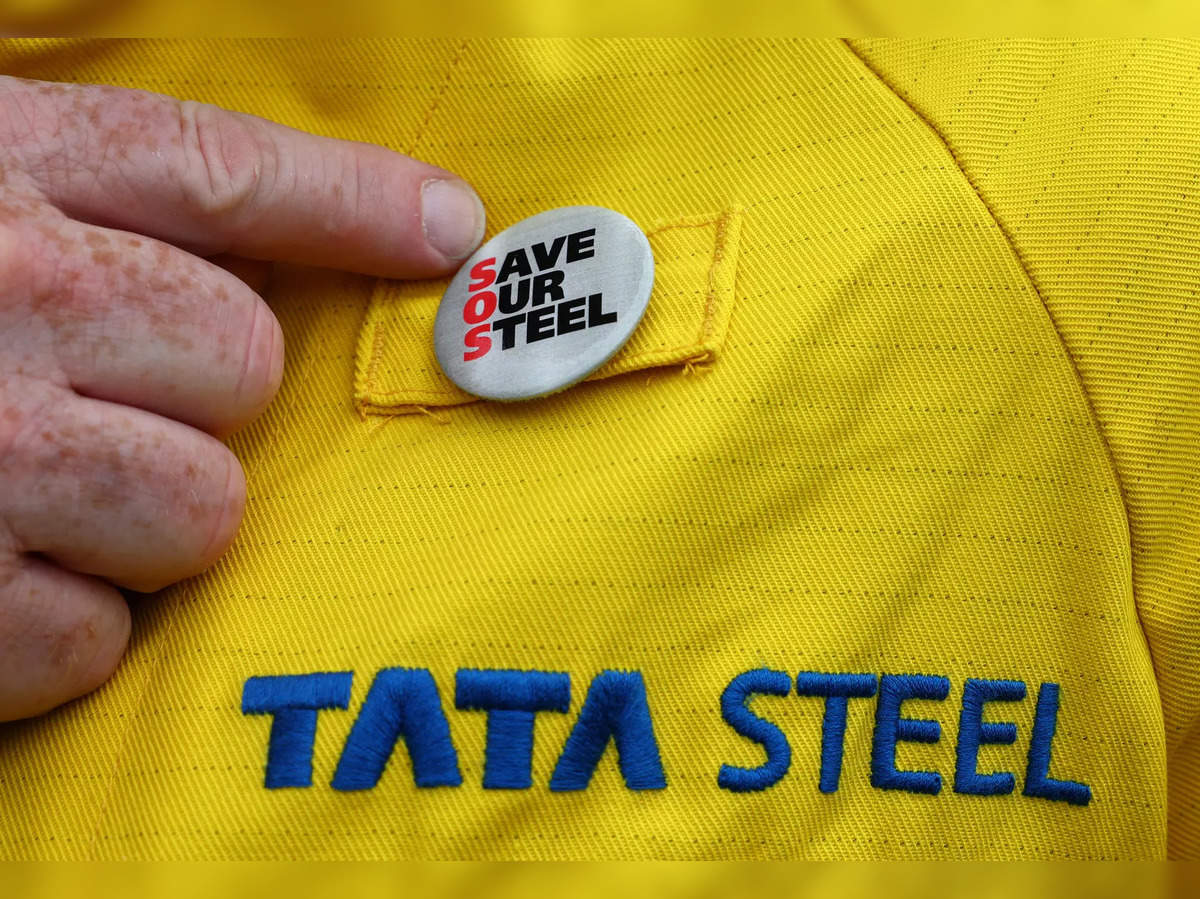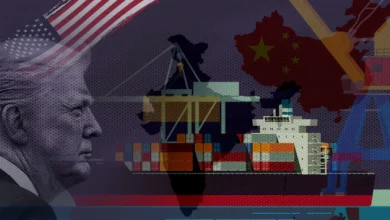Tata Steel Q1 Profits Plunge 92% Due to Impact from Europe, 2023

Tata Steel Q1 Profits Plunge 92% Due to Impact from Europe, 2023
Despite reporting a 91.84% decline in consolidated net profit to Rs 634 crore for the first quarter ended in June, Tata Steel outperformed experts’ predictions that the business would report a net loss.
In the same quarter a year before, the steel giant reported a net profit of Rs 7,764.96 crore.
The consolidated income from operations for the Tata Group company decreased 6.21% to Rs 59,490 crore during the quarter under review from Rs 63,430 crore during the same quarter last year.

The company was expected to report a combined net loss of Rs 122 crore on revenues of Rs 56,338 crore and Ebitda of Rs 5,050 crore, according to a consensus estimate of Bloomberg analysts.
Non-cash deferred tax charges related to a buy-in transaction at British Steel Pension Scheme (BSPS) impacted profitability. With this, Tata Steel UK’s exposure to risk has been reduced, according to a statement from the business.
The Ebitda of Tata Steel more than halved from ‘15,047 crore to ‘6,122 crores, while its adjusted Ebitda decreased from ‘14,348 crore to ‘6,238 crore in the same period last year.
Tata Steel’s Europe sales decreased by 17.82% to ‘21,335 crores (‘25,961 crores), with an Ebitda loss of ‘1,560 crores compared to a comparable year-ago quarter’s Ebitda profit of ‘6,037 crores. The company’s India businesses, which include Tata Steel and Tata Steel Long Products, had an increase in turnover of 2.6% to ‘34,901 crores (from ‘34,015 crores) but a 31% decline in net profit to ‘4,017 crores.

“During the quarter, global economic recovery continued to face headwinds, affecting commodity prices including steel,” stated TV Narendran, CEO & MD of Tata Steel. Domestic steel demand in India increased by almost 10% yearly, although spot steel prices fell in line with global indications. With India producing about 5 million tonnes of crude steel, Tata Steel maintained a consistent performance.
According to him, domestic deliveries increased by 20% and expanded more quickly than India’s apparent steel consumption. He said, “We had substantial growth in critical areas, including branded goods, retail, and industrial products and projects, which climbed by 37% and 24%, year-over-year.
The ramp-up at Neelachal Ispat Nigam was the main factor in the company’s India crude steel output at roughly 5 million tonnes, up 2% yearly. Delivery increased by 18% annually to 4.8 million tonnes, primarily due to increased domestic delivery. Its net debt was at 71,397 crore.
“In Europe, margins were broadly similar on a q-o-q basis as rise in revenue per tonne was offset by lower volumes and elevated input costs,” said Koushik Chatterjee, ED & CFO of Tata Steel. Tata Steel UK has successfully been derisked in the UK after the buy-in deal for the remaining obligations of the British Steel Pension Scheme was concluded.
He said the volatility in the steel markets hurt working capital and cash flows, “but we continue to commit to growth in India and spent ‘4,089 crore on capital expenditure during the quarter”.
TV Narendran has been reappointed by Tata Steel as CEO and MD for another five years, starting September 19, 2023. On September 18, his current term as CEO and MD will end. The consent of the shareholders is required for the reappointment.
Narendran joined Tata Steel in 1988, and on November 1, 2013, he was named MD of Tata Steel for India and South East Asia. He was promoted by the organization to worldwide CEO & MD in October 2017. He currently serves on the supervisory boards of Tata Steel Nederland BV, Tata Steel Long Products, and Neelachal Ispat Nigam. Additionally, he holds the position of chairman at Tata Steel Europe.
Tata Steel, one of India’s largest steelmakers and a globally recognized player, recently reported a significant drop in its first-quarter profits for the fiscal year 2023-24. A notable 92% decline, this sharp plunge has raised eyebrows in the financial market, with the company attributing the primary cause of this dramatic downturn to its European operations.
In its report, Tata Steel has cited a 92% fall in its net profit for the first quarter of the 2023-24 fiscal year compared to the same period in the previous fiscal year. This significant drop has starkly revealed the financial vulnerabilities and strains the company has been experiencing. In actual figures, the profit dropped from INR 10,104 crores in Q1 2022-23 to a mere INR 800 crores in Q1 2023-24.
Tata Steel’s European operations, which constitute a significant portion of its global footprint, have been impacted by various factors. One of the primary contributors to the sharp fall in profits was an unprecedented surge in raw material prices, adversely affecting the company’s operational costs.
In addition to the soaring raw material costs, Europe’s sluggish economic growth, trade uncertainties, and lower steel demand due to factors like the automotive industry’s slowdown and reduced construction activities also played a substantial role in the profits dip. IN PARTICULAR, the UK’s steel industry has struggled with high energy costs and competition from cheaper steel manufacturers.
Furthermore, the ongoing effects of the COVID-19 pandemic have continued to ripple across the global supply chains, disrupting Tata Steel’s operations in Europe and compounding the financial challenges the company has had to grapple with in this quarter.

Despite the setback in Q1, Tata Steel remains optimistic about its prospects. The company believes that the decline in profit is a short-term obstacle and is focusing on various strategies to mitigate the impact. These include cost control measures, operational efficiency improvements, and strategic investments in innovation to optimize the production process and reduce operating costs.
Furthermore, Tata Steel is also looking to boost its domestic Indian operations, where the demand for steel remains robust due to ongoing infrastructure development projects and rapid urbanization. The company also strengthens its business portfolio through acquisitions and expansions to diversify its risk.
The Q1 profit drop has undoubtedly been a shock for Tata Steel. Still, it’s important to remember that business cycles have their ebbs and flows, especially in industries as cyclical and susceptible to market dynamics as steel. The factors that have led to this situation are primarily external and not entirely within the company’s control.

Tata Steel has shown resilience in the past and navigated through challenging periods. The company’s focus on cost optimization, productivity enhancement, and strategic investments will be vital in weathering the current challenges and moving towards a profitable future. It is yet to be seen how effective these actions will be. However, the organization is optimistic about its future potential and overall strategy.





